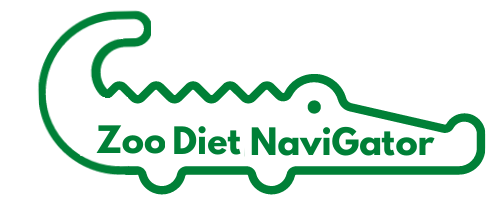History: Difference between revisions
mNo edit summary |
|||
| Line 12: | Line 12: | ||
== <translate><!--T:5--> Current</translate> == | == <translate><!--T:5--> Current</translate> == | ||
<translate><!--T:6--> In 2023, Heidi switched institutions and started making further development on the system with the permission of her current institution and SeaWorld/Busch Gardens. The program is fully in use at her current institution and ZDN is under active development.</translate> | <translate><!--T:6--> In 2023, Heidi switched institutions and started making further development on the system with the generous permission of both her current institution and SeaWorld/Busch Gardens. The program is fully in use at her current institution and ZDN is under active development.</translate> | ||
== <translate><!--T:7--> Why is it free? What does that mean?</translate> == | == <translate><!--T:7--> Why is it free? What does that mean?</translate> == | ||
Revision as of 16:11, 21 February 2024
History
Zoo Diet NaviGator began life as a basic label and diet card printing system at Busch Gardens Tampa Bay around 2010 developed by Dr. Troy Tollefson who did much of the original heavy lifting of getting Busch Gardens' animal diets entered and organized into the system.
It was gradually and slowly expanded into a fully-fledged commissary operations system by Dr. Heidi Bissell starting in 2012, who added many new features such as diet analysis, recipes, budgets, and the ability to group diets. However, once Busch Gardens switched to using Tracks to manage animal records and diets, the project was abandoned.
SeaWorld/Busch Gardens was kind enough to release the project under the GNU GPL 3.0 license, which means the software is free to use, free to modify, and free to redistribute both by non-profit and for-profit organizations and individuals. The project was available from 2017 through 2023 as the "Animal Diet Database", and many institutions downloaded it and adapted it for their use.
Current
In 2023, Heidi switched institutions and started making further development on the system with the generous permission of both her current institution and SeaWorld/Busch Gardens. The program is fully in use at her current institution and ZDN is under active development.
Why is it free? What does that mean?
It is free because it was originally released as freeware by SeaWorld. It is free because Heidi doesn't have time to provide the level of support that paid users would expect. However, Heidi is committed to helping this be a tool widely used by the zoo community.
There are ongoing free training opportunities via Zoom roughly every two weeks. Currently the focus is on helping people get ZDN installed and through the initial setup process. Future trainings will include how to modify forms and reports to meet your own needs, how to write queries, and more.
For assistance beyond the online documentation or the regular trainings, Heidi can provide custom consultations.
How can I support this project?
ZDN is intended to be a community-driven project. You can help by:
- Authoring documentation is the main need at the moment. If you use the software, please help flesh out this documentation wiki! Instructions are at the top of the main page.
- Attending trainings and helping others
- Participating in the online WhatsApp group (https://chat.whatsapp.com/EJlHrI4Xf5f8m0Horz5nZA)
- Identifying bugs
- Suggesting features
- Sharing features you develop with others
Release History
- 2024 March - Zoo Diet NaviGator v2.2 planned release
- 2024 Jan - Zoo Diet NaviGator v2.1 released
- 2023 Sept - Zoo Diet NaviGator v2.0 released as fully functional (with some beta features)
- 2023 Jan - ZDN v1.7 released as an updated and re-branded version of the Animal Diet Database
- 2017 Sept - Animal Diet Database 1.0 released under GNU GPL 3.0 license.
Future
- Check out the Development roadmap
- Submit bugs and feature requests
> Uses
